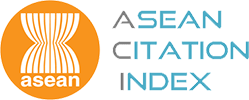Variations in Performances in Chinese Small and Medium Enterprises
Keywords:
Small medium enterprise, business performance, PIMS, resource-based model, industrial organizational, managerial characteristic and business strategyAbstract
Malaysia, like many developing countries, is encouraging local businesses to take greater role in the management of its economy. While incentives and deregulation measures are offered, variations in performances still persist. Researchers have long been interested in explaining the variance in firm performance, as even those firms operating in the same industry and in the same business environment show differences in performance outcomes. Numerous paradigms in the literature have been employed to explain the variance in business performance, including the Classical Industry Organisation, the Revisionist school, the New Industrial Organisation school, the PIMS paradigm, the Austrian school, and the Resource-based school. This paper investigates the combined effects of managerial characteristics of owners/managers and business strategy on the firm performance of Chinese small and medium enterprises (SMEs) in Malaysia. Using multivariate relationship, the results of the study did not show any significant correlation between the managerial characteristics of the owners/managers and firm performance outcomes among the Chinese entrepreneurs. Nevertheless, a significant amount of variance in performance outcomes can be explained by firm strategy. Furthermore, several significant correlations were found between managerial characteristics and business strategy.
Additional Files
Published
30-06-2009
How to Cite
Mohamad, M. H., & Sung, C. I. (2009). Variations in Performances in Chinese Small and Medium Enterprises. International Journal of Management Studies, 16(1), 97–113. Retrieved from https://e-journal.uum.edu.my/index.php/ijms/article/view/9959
Issue
Section
Articles












